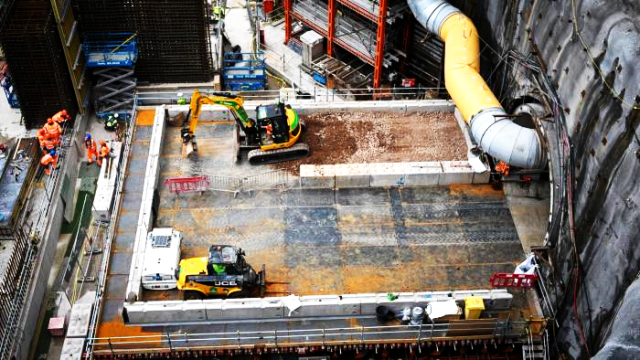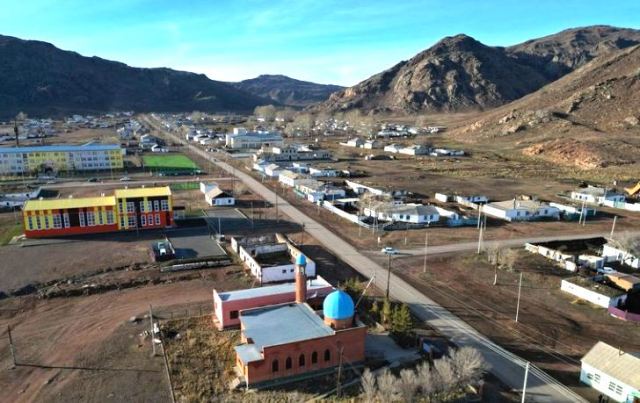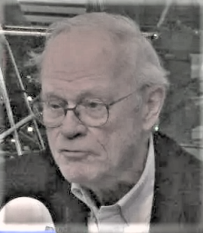The cost of Britain’s nuclear weapons is skyrocketing; a National Audit Office report reveals that Britain’s nuclear weapons will account for almost a third of military procurement spending over the next decade.

In December 2023 the NAO published The Equipment Plan 2023–2033, which found that the budget for the Defence Nuclear Organisation saw its “costs increased by £38.2 billion (62%) to £99.5 billion” in 2023.
Founded in 2016, the Defence Nuclear Organisation is a body within the Ministry of Defence that oversees Britain’s Nuclear Defence Enterprise – nuclear weapons infrastructure, procurement, research and equipment – including the delivery of Britain’s new nuclear-armed Dreadnought-class submarines.

In February this year HMS Vanguard conducted a Trident missile firing that was said to have demonstrated the boat’s readiness to return to operations following an extensive refit (Armada International). But the missile’s booster rockets failed and it landed in the sea close to the launch site (BBC):
 CND General Secretary Kate Hudson said: “Spending on Britain’s nuclear weapons is well and truly out of control and has to stop. We have a climate emergency to tackle, a cost-of-living crisis to end, and crumbling public services to fix. Yet the government thinks that spending ever-increasing sums on new nuclear weapons is the priority – all at the expense of the public it is supposed to protect”.
CND General Secretary Kate Hudson said: “Spending on Britain’s nuclear weapons is well and truly out of control and has to stop. We have a climate emergency to tackle, a cost-of-living crisis to end, and crumbling public services to fix. Yet the government thinks that spending ever-increasing sums on new nuclear weapons is the priority – all at the expense of the public it is supposed to protect”.
She ended: “There is no evidence to back up the claim that nuclear weapons keep us safe. They actually make us a nuclear target and building new ones just fuels a new nuclear arms race and an increasing risk of nuclear war. It’s time to end the madness and get rid of them once and for all.”
Keir Starmer claims that we need nuclear weapons “in the face of rising global threats and growing Russian aggression (BBC).” But nuclear weapons have done nothing to avoid the Russian invasion of Ukraine – indeed mzny stress that the gradual expansion of nuclear-armed NATO to the borders of Russia has been a huge contributing factor to the conflict.
 Sir Keir Starmer talks to workers at the BAE Systems factory in Barrow-in-Furness
Sir Keir Starmer talks to workers at the BAE Systems factory in Barrow-in-Furness
Ben Chacko’s editorial refutes the claims of Trident supporters that the 30,000 BAE Systems jobs supported at a cost of £205bn are protected by investment in Britain’s nuclear weapons. The real figure in 2016, according to a report by CND, was closer to 11,500. And the bulk of the £205bn spent on Trident goes into the pockets of shareholders in the global arms trade.
 As former Labour leader Jeremy Corbyn said, “Security is being able to put food on the table. It’s having a roof over your head” (Twitter/X). Ben concludes that if Labour really cared about the creation of secure well-paid jobs, it will – if elected – invest the money to be wasted on Trident in rebuilding Britain’s manufacturing base, creating high-skilled, well-paid (Ed: and cleaner) jobs for communities which have suffered the ravages of 40 years of deindustrialisation.
As former Labour leader Jeremy Corbyn said, “Security is being able to put food on the table. It’s having a roof over your head” (Twitter/X). Ben concludes that if Labour really cared about the creation of secure well-paid jobs, it will – if elected – invest the money to be wasted on Trident in rebuilding Britain’s manufacturing base, creating high-skilled, well-paid (Ed: and cleaner) jobs for communities which have suffered the ravages of 40 years of deindustrialisation.
o
o
o
o





 Decommissioned: Hinkley Point B
Decommissioned: Hinkley Point B For years, suggestions by a small group of dedicated academics and campaigners that the UK Government’s Nuclear Energy Strategy is being driven primarily by the UK’s continuing commitment to an “independent” nuclear weapons capability.
For years, suggestions by a small group of dedicated academics and campaigners that the UK Government’s Nuclear Energy Strategy is being driven primarily by the UK’s continuing commitment to an “independent” nuclear weapons capability. We are unlikely to get more than a couple of hugely expensive Small Modular Reactors, at some indeterminate point in the future (
We are unlikely to get more than a couple of hugely expensive Small Modular Reactors, at some indeterminate point in the future (

 The proposed new B61-13 is usually described as a nuclear gravity bomb and more rarely as a
The proposed new B61-13 is usually described as a nuclear gravity bomb and more rarely as a 



 Saudi Arabia’s Crown Prince Mohammed bin Salman
Saudi Arabia’s Crown Prince Mohammed bin Salman
 Alongside our granting of a squadron of Challenger 2 main battle tanks to Ukraine, we will be providing ammunition including armour piercing rounds which contain depleted uranium. Such rounds are highly effective in defeating modern tanks and armoured vehicles.
Alongside our granting of a squadron of Challenger 2 main battle tanks to Ukraine, we will be providing ammunition including armour piercing rounds which contain depleted uranium. Such rounds are highly effective in defeating modern tanks and armoured vehicles.
 The United States, United Kingdom, Israel, and France all opposed a
The United States, United Kingdom, Israel, and France all opposed a  “This principle, widely accepted in international law and policy documents, states that you do not have to wait for absolute scientific certainty in order to take action to prevent further deterioration of the situation at hand”
“This principle, widely accepted in international law and policy documents, states that you do not have to wait for absolute scientific certainty in order to take action to prevent further deterioration of the situation at hand” 
